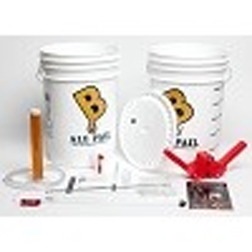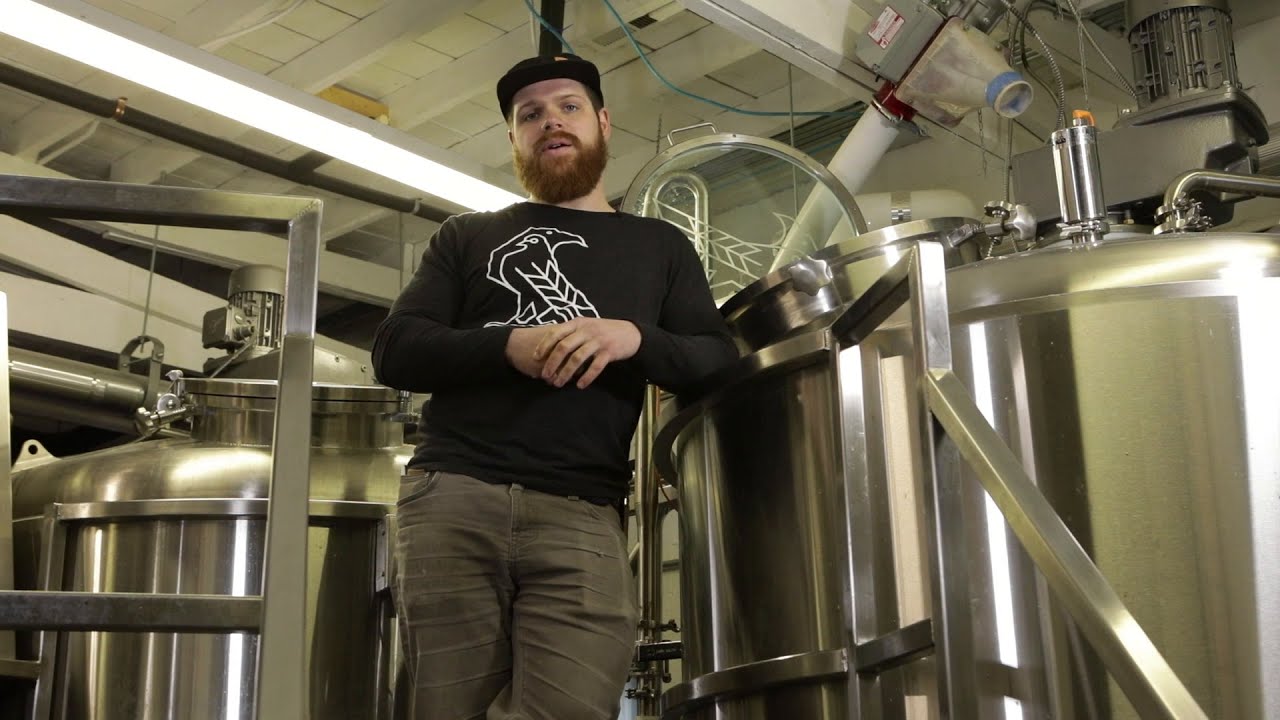This method of brewing gets its name because it involves the use of concentrated Malt Extract in the brewing process. It is often the form of brewing used by most new brewers. In the extract brewing method, the mashing process is skipped, with only the boil and fermentation step to get done. For the brand-new brewer, the brewing experience is simplified.
Other advantages for the new brewer compared to all-grain brewing:
- Less time, almost one-half as much
- Less equipment
- Less expensive to get started
In extract brewing, the mashing process is already completed. The new brewer will use either canned concentrated liquid malt (LME)or bagged dry extract Malt (DME).
Concentrated extracts are produced by mashing grain malt, then removing most of the water to concentrate it into a thick syrup, or all the water to produce the dry extract. Liquid concentrated extracts, usually packaged in three or three and one-half pound cans. Dry malt will have a usual package of 1-pound bags for the home brewer.
Malt extracts and hops are added directly to the brew pot and boiled together to create a sweet liquid called wort for fermenting.
The disadvantage of Extract brewing method is the brewer does not have as much control over the composition and ingredients used as an all-grain brew. Does not mean the brewer cannot brew a very high-quality beer by using extract brewing. In fact, many brewers have won many awards when using this type of brewing method.
Contents
Steeping Grains
Sometimes extract brewers will steep specialty grains (see specialty malts) to add color, flavor and body to the beer; always done before the boil.
Steeping adds fermentable sugars to the brew, plus can provide a large variety of flavors and colors to your beer. Steeping is done by placing the specialty grains in a steeping bag and immerse in the brewing water. On the other hand, the steeping grains can be put in a separate pot while the main boil is being prepared, by using a steeping bag. Bring the water to 150-170F (65-75C) and hold for 30 minutes. The grain bag removed from the resulting tea that is added to the brew pot to continue with the standard extract boiling process. Some specialty malts and pale malt, Munich malt, wheat malts, as well as most flaked ingredients are not in the Extract Brewing Processes because they require mashing before using.
Process steps:
- Add water to a brew pot and heat.
- Add liquid malt extract or dry extract to water and when it gets to required temperature, it will form the sweet wort needed for fermentation.
- To add color, flavor, and body; place specialty whole grains in either the main brew pot (or a separate pot).
- Hops added, and the wort boiled for 45-90 minutes
- Cold water is added to bring the volume up, and the wort is cooled to room temperature as quickly as possible
- Yeast added, and the beer ferments for 7-14 days
- Add priming sugar to the finished beer and then bottle or keg for consumption
Extract Brewing Equipment
Note: Throughout this website, you will find URL links that will open a new window in your browser and a website page where you can purchase equipment, ingredients, books, etc. or addition information. I purchase many of my brewing needs from the local Home Brew Shop. However, I use the Internet also.
There are the very inexpensive basic equipment kits available for extract brewing. I am listing the items of four different setups of beginner’s equipment packages. The upgrade lists give the added items also in the basic kit.

Essential kit components
6.5 Gallon “Ale Pail” Primary Fermenter with Drilled & Grommet
Lid
6.5 Gallon “Ale Pail” Bottling Bucket with Bottling Spigot
Easy Clean No-Rinse Cleanser
Airlock
Auto Siphon
Bottling Set-up
Instruction Manual
Hydrometer and Test Jar
Bottle Brush
Twin Lever Capper
Liquid Crystal Thermometer
Upgrade #1:
5 Gallon Glass Carboy & Bung
Carboy Brush #7
Brew Paddle
• This Upgrade Kit includes the basic kit items.
Upgrade #2:
Liquid Crystal Thermometer (Strip)
5-Gallon Plastic Carboy instead of the glass carboy.
Matching Bung for plastic carboy
5-Gallon Stainless Steel brewing pot (Any pot of any other material than SS can leave a metallic flavor in your beer).
Lab Thermometer
Brew Paddle
This Upgrade Kit includes the basic kit items.
Upgrade #3:
5-Gallon Glass Carboy & #7 Bung
8-Gallon Stainless Steel brewing pot (Any pot of any other material than SS can leave a metallic flavor in your beer).
3/8″ Copper Wort Chiller
Liquid Crystal Thermometer (Strip)
Lab Thermometer
Brew Paddle
This Upgrade Kit includes the basic kit items.
Extract Beer Recipe Kits
The new brewer should buy a beer recipe kit. These equipment kits do not include the recipe kit.
My Extract Brewing Experiences
If I were a beginning brewer again, the first thing, I would do is find a local home brew club to join. Finding someone with experience will move you forward faster than reading a book. Read the books that are available covering the Home Brewer’s hobby from a to z. They are imperative to have after you have read (studied) them as reference manuals.
After you find a club and join, find a mentor in that organization to help you. One thing about homebrewers, we are always willing to help the beginner. I did not do any of the above and as a consequence some of the problems I had;
- Boil over actually makes a sticky mess to clean
- Wrong size brewing pot means adding water after the boil.
- I didn’t know my evaporation rate during the boil, which led to the above item.
- I didn’t have a hop bag for hop additions, so I had to filter them out with a screened funnel, no fun, the screen would plug up.
- I did not remove chlorine from the tap water before using it for brewing, the 1st batch of beer tasted and smelled like band-aids. Pre-boiling water can remove chlorine or using Camden tablets. Click here, to learn about the four ways to remove chlorine from tap water.
There were other problems, but by now I believe you get the idea. Under Menu Label “Reviews,” I will list the books that are in my library, a collection of seven years, with links to the source website where you can purchase them if you wish.
One book that was published in 2006. How To Brew, John J. Palmer, in this book John shares his years of hands-on experience to help home brewers expand their knowledge and expertise with the hobby, while consistently make great beers. Start reading “How to Brew” on the How to Brew.com here. Complete book is on the web for your home brewing education, or you can purchase it from Amazon for under $12, Learn to Brew then you will have it as a ready reference at any time.
After the first batch being an awful tasting beer, I found a mentor from a local club, and the second batch was drinkable. My mentor had told me that I should go to all-grain brewing, so I did.
For different equipment requirements for all-grain brewing and information, All-grain Brewing

